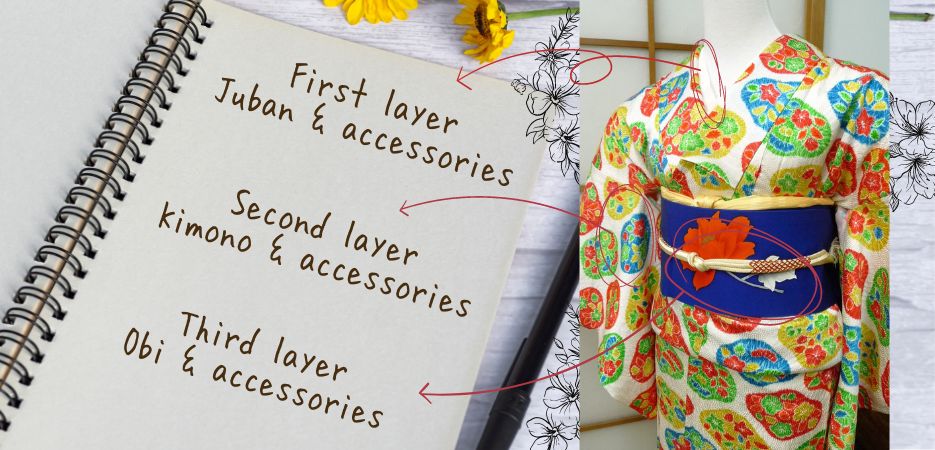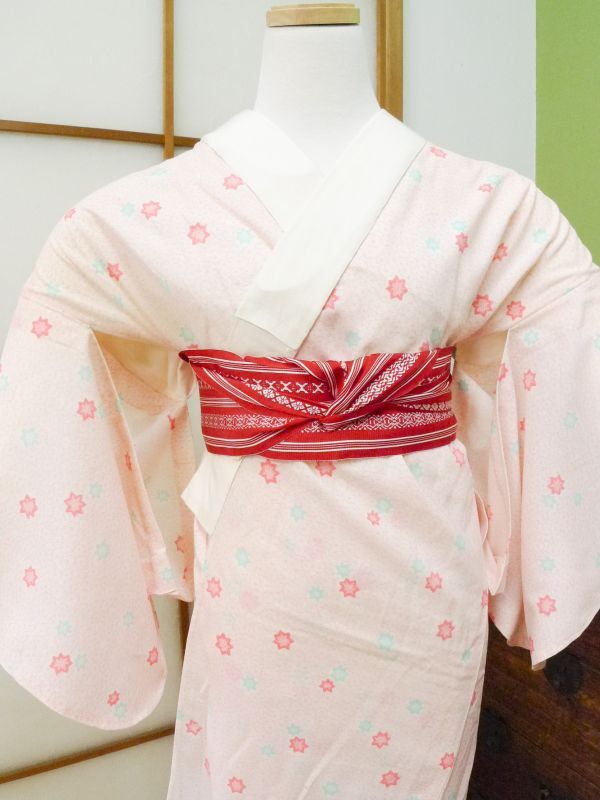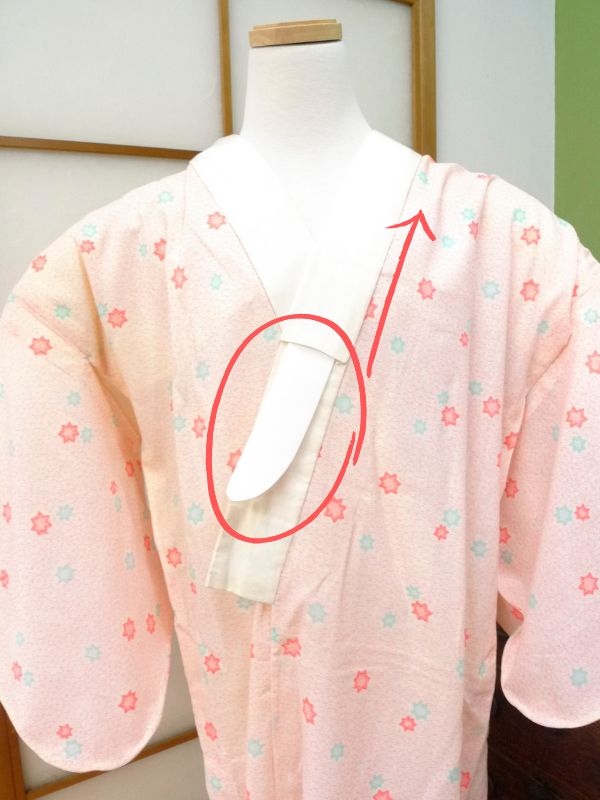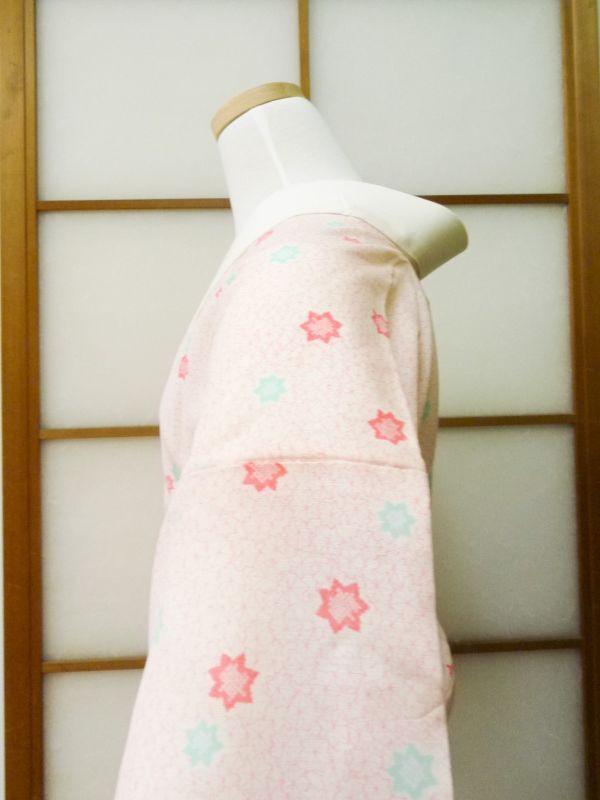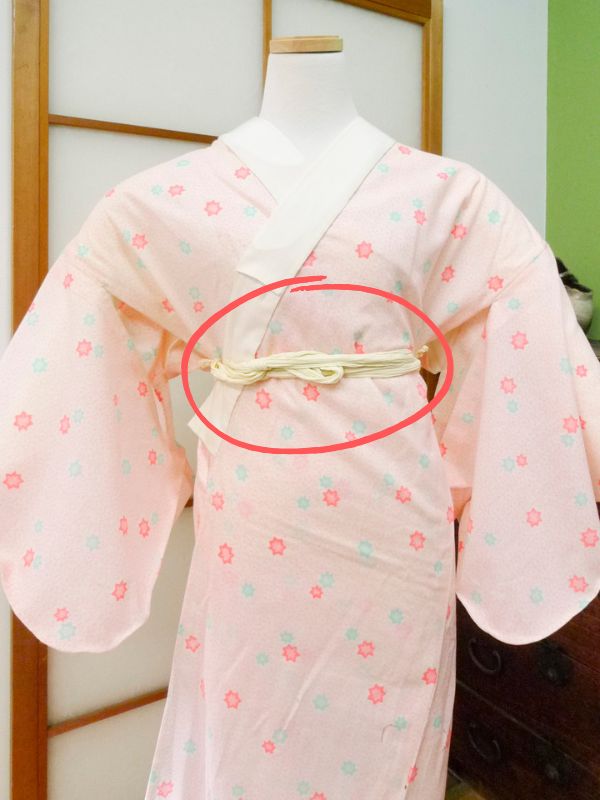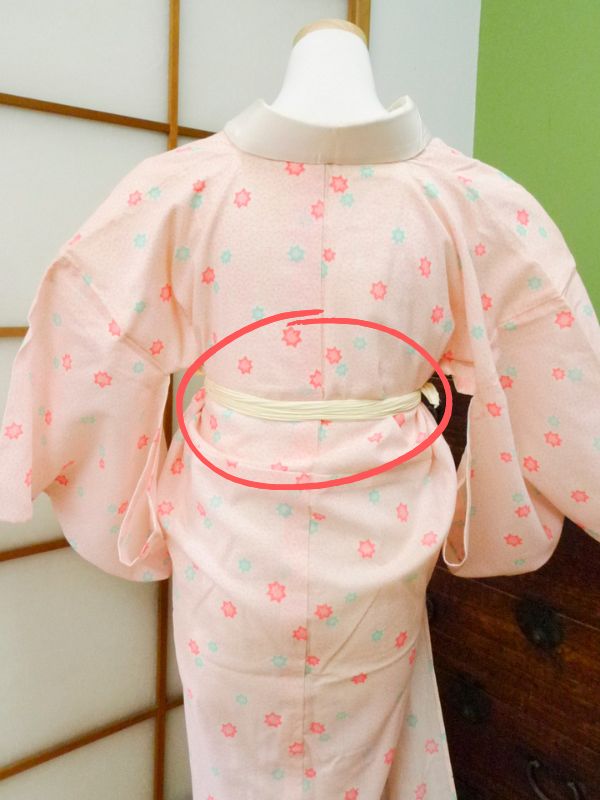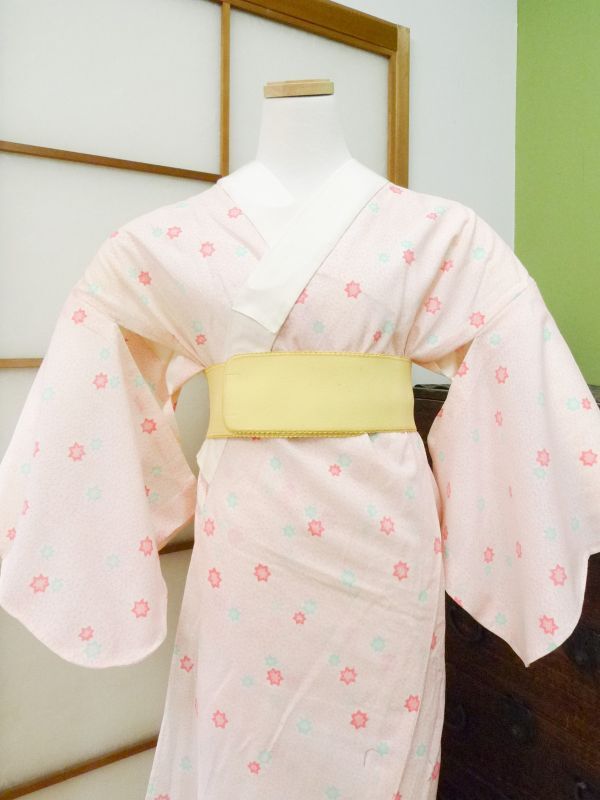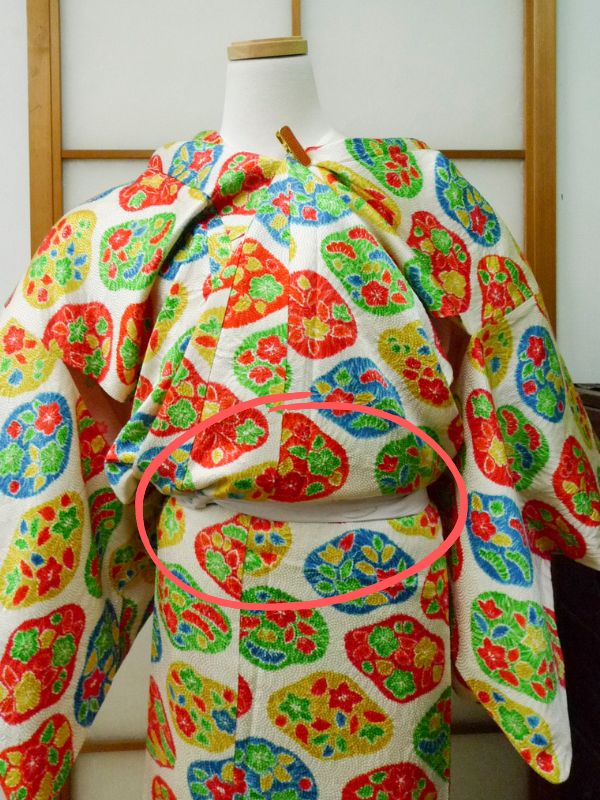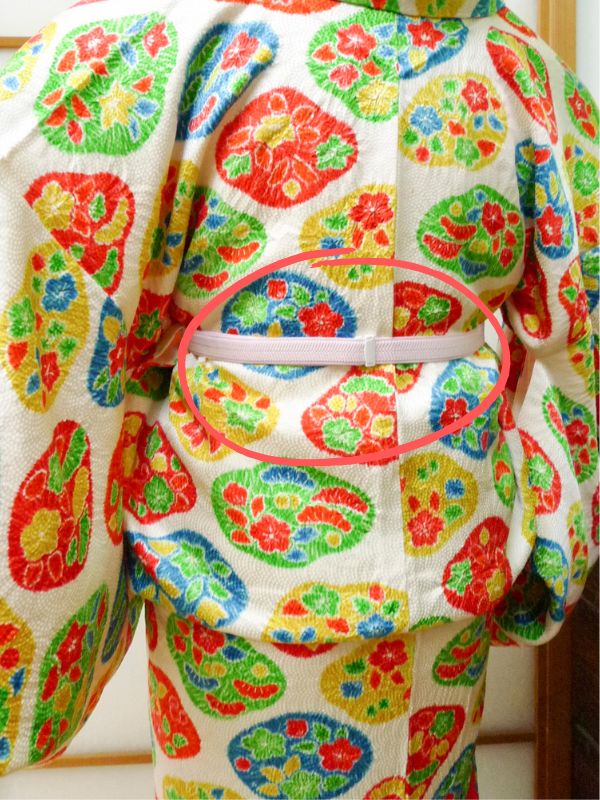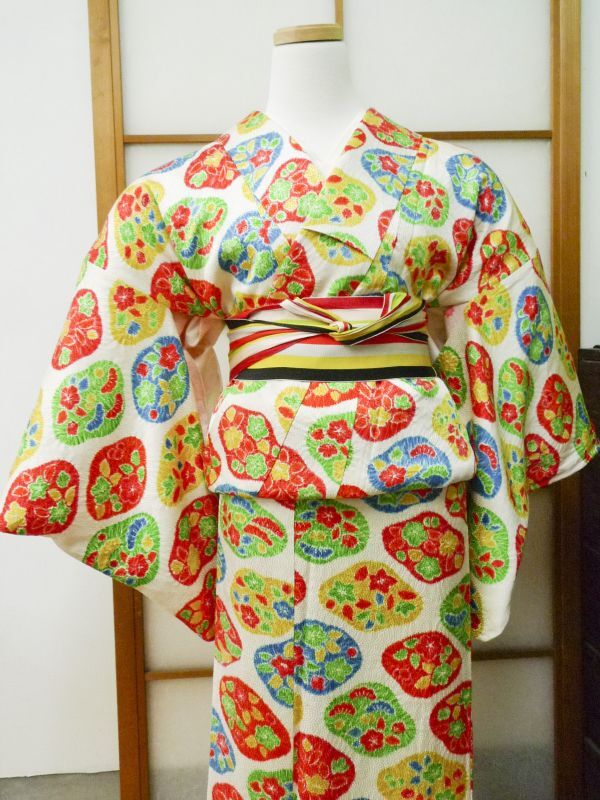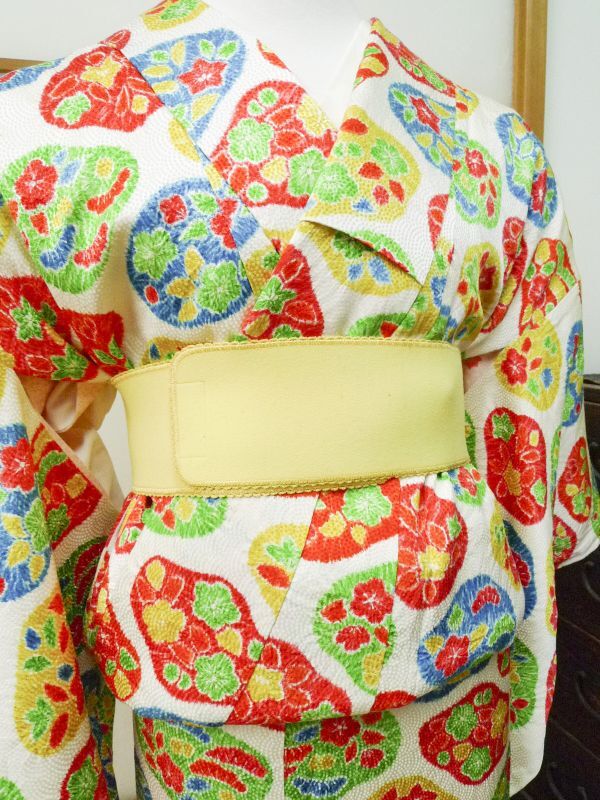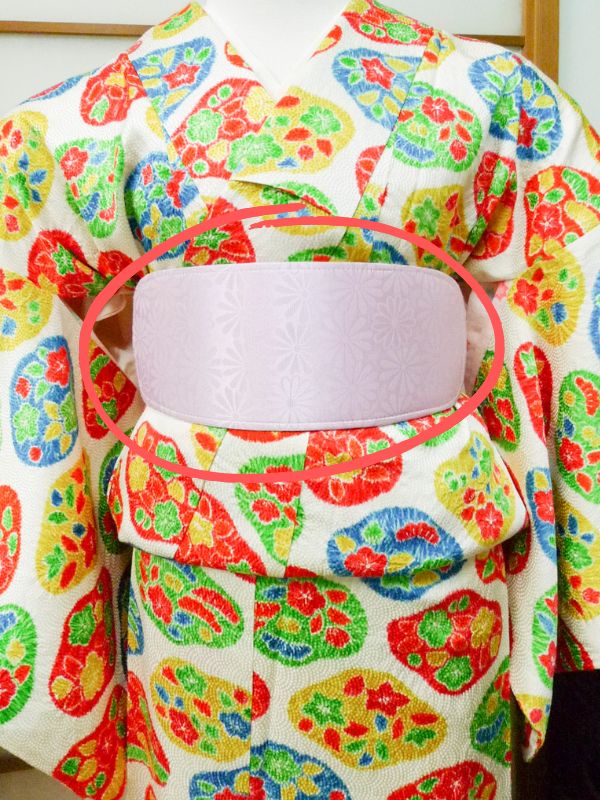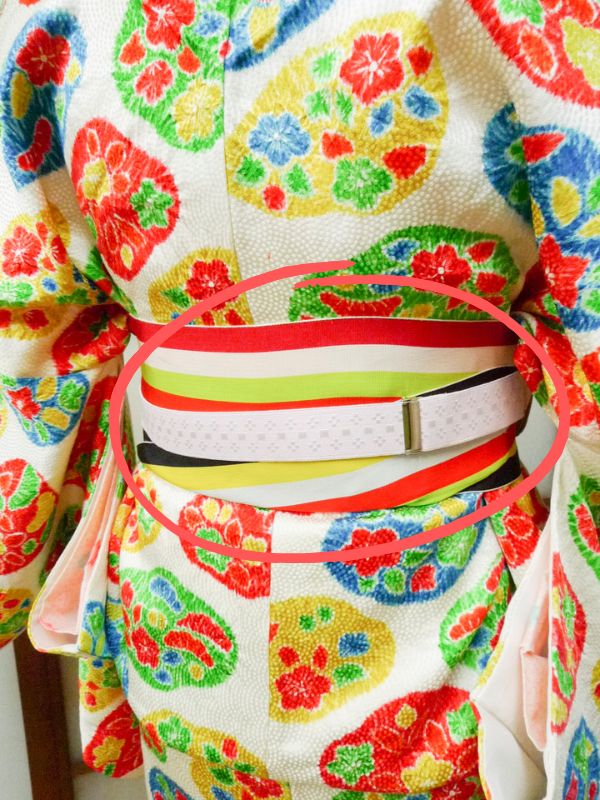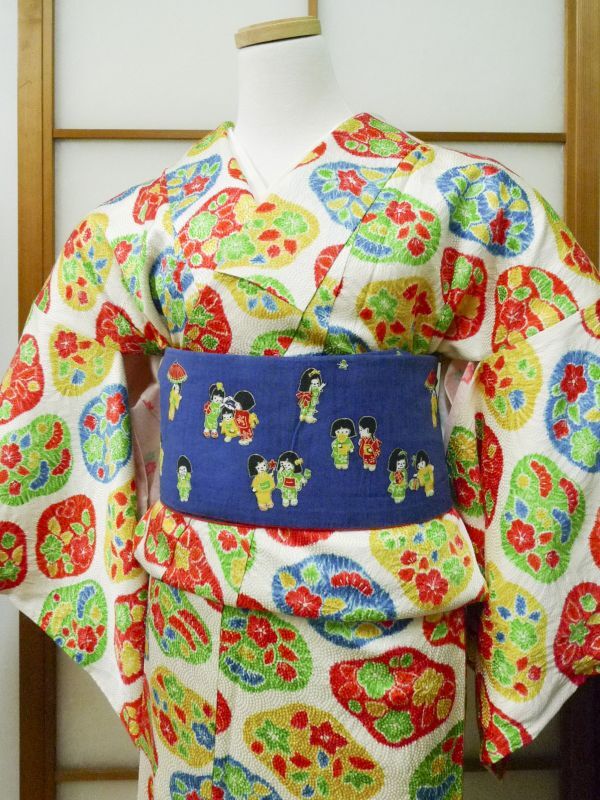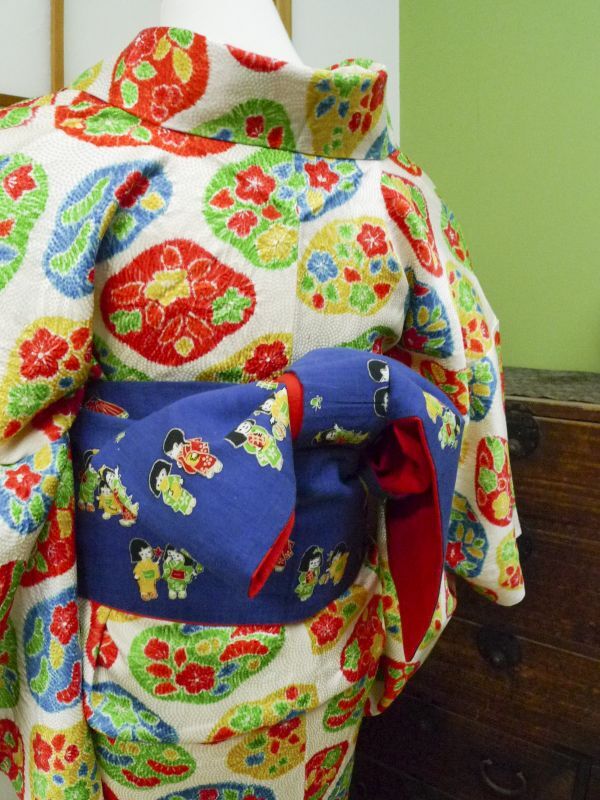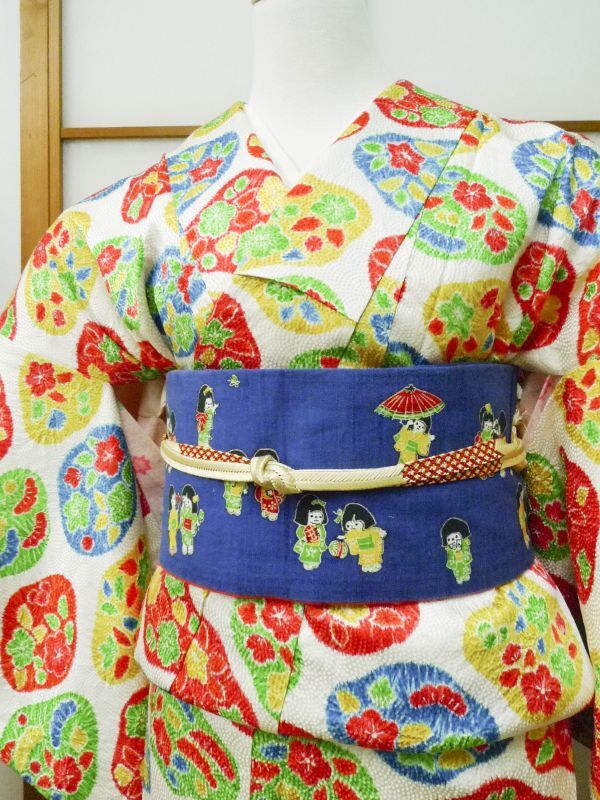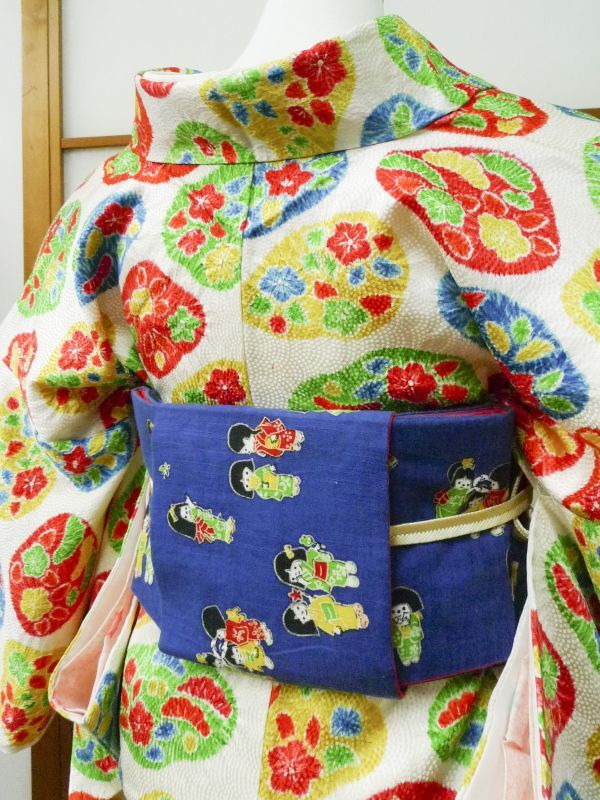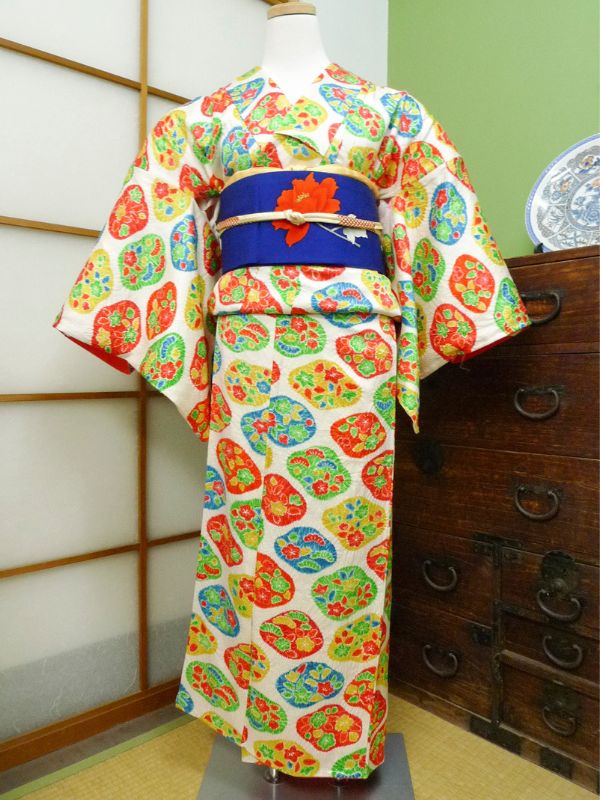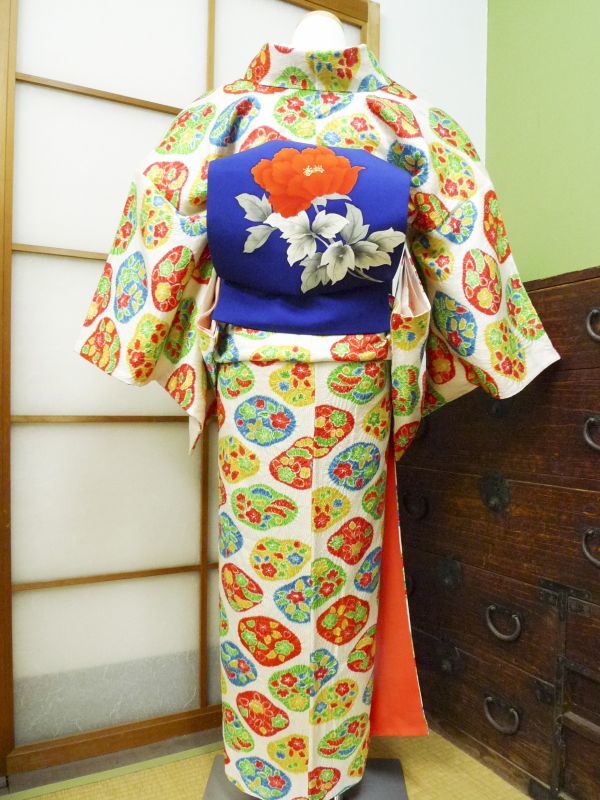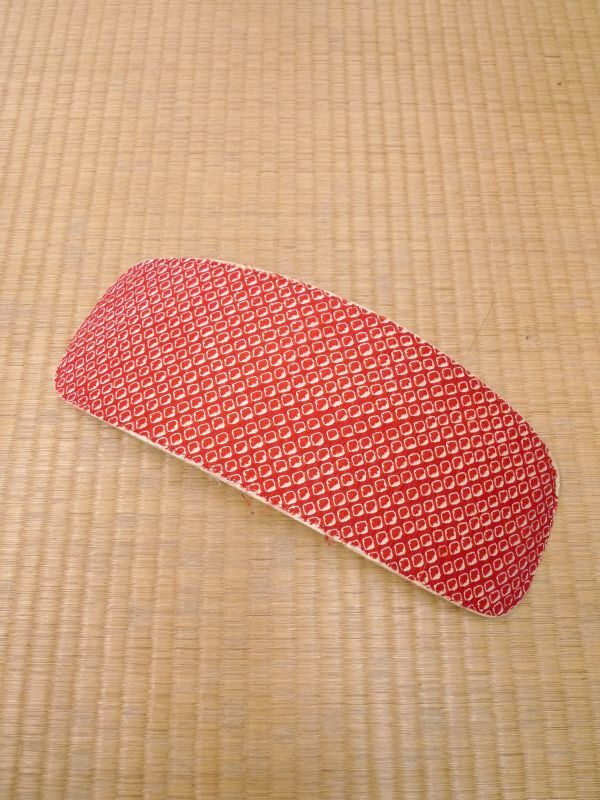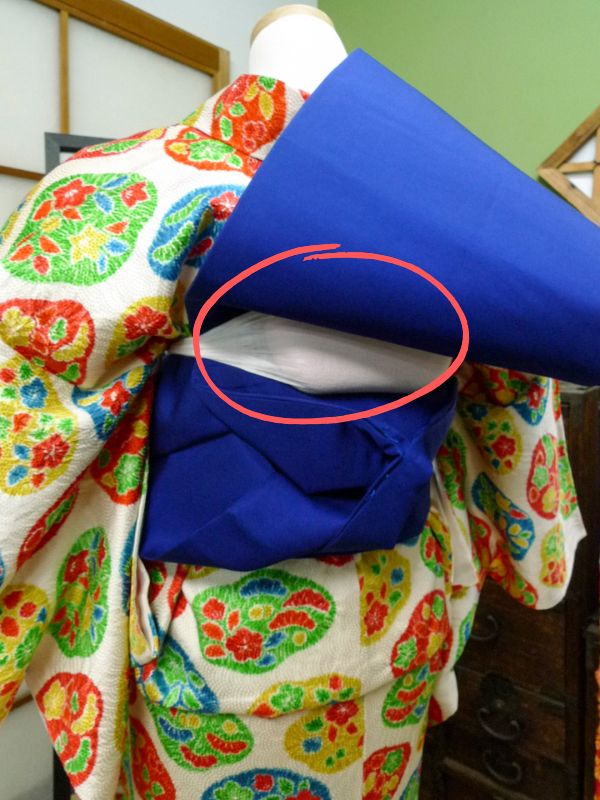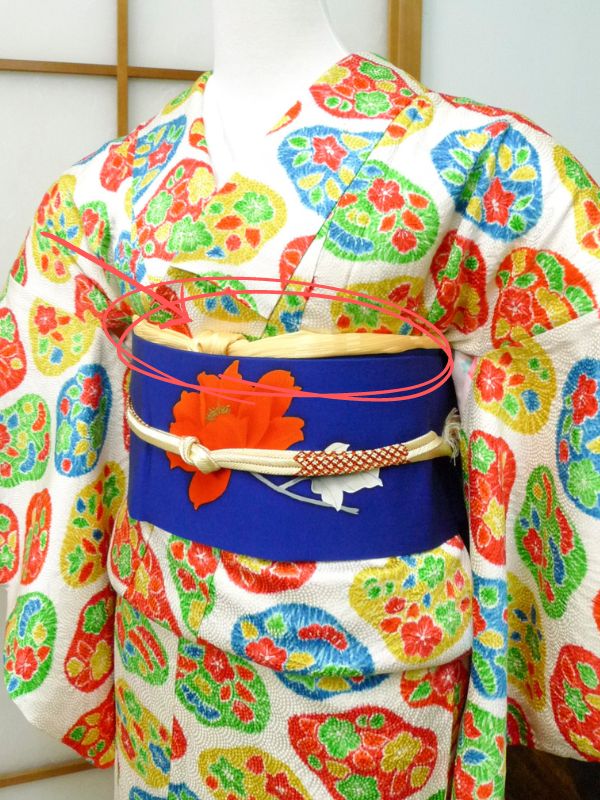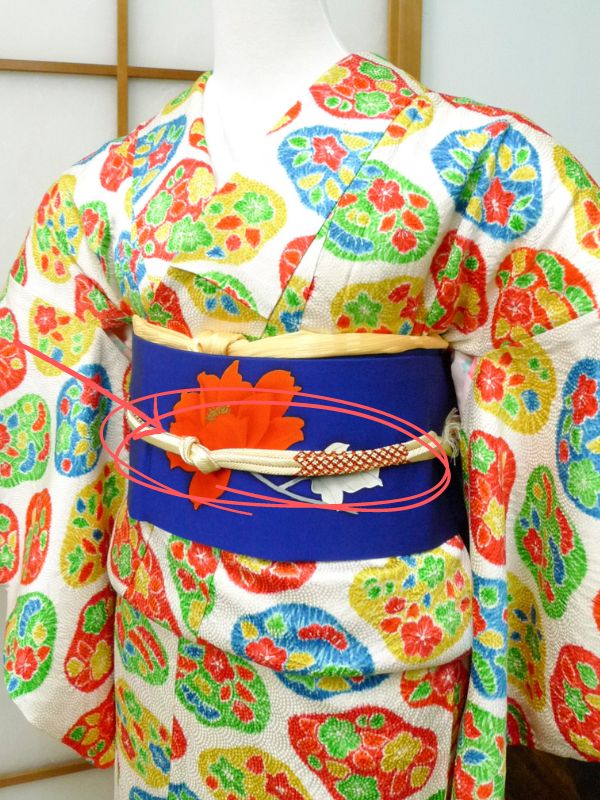Introducing kimono layers
In this page, we would like to share the actual kimono layers when it is worn in traditional way.
Here is the rough explanation about kimono layers.
There are three major layers which are undergarment, kimono and obi. Each layers require accessories to hold on your boday.
We would like to share each layers in detail, so that you will know which item you will need.
First layer - Undergarment
Juban(Nagajuban) |
|||
| It is an undergarment that you wear under kimono, except Yukata. | |||
Accessoris for Juban |
|||
Collar interfaceEliminates wrinkles and keeps the collar shape of the nape clean. It will be slide into the collar part of Juban. |
|||
Tieing string/cordIt is use to tie around your chest to hold Juban. It is made of cotton or synthetic. You can substitute by making a string from a piece of fabric you have on hand. |
|||
Datejime |
|||
|
Kimonos can fall out of place when the body is moved.
Datejime is fastened over previous string/cord, which prevents the collar from shifting due to loose fitting. Some are made of pure silk, some are made of polyester, and some are fastened with Velcro. It is your preference which one to use. |
|||
| Made of silk | It is fastened with Velcro | ||
Second layer - Kimono
|
Any type of kimono that you like.
If you prefer a more traditional look, choose a kimono that suits the occasion. |
|||
Accessories |
|||
Tieing string/cord(same type of string/cord that is used on Juban)It is use to tie around your west to hold Kimono. It is made of cotton or synthetic. You can substitute by making a string from a piece of fabric you have on hand. |
|||
Colin beltRubber belt. Prevents collars from falling off. It can be used in place of a Tieing string/cord. It is your choice which one to use. (It is not in our stock.) |
|||
DatejimeIt serves the same function as the one used for Juban. It is your choice which one to use. |
|||
Obi-ita with beltThis is a kind of underlay that keeps the obi from wrinkling. It can be substituted with cardboard or other materials. If the "Obi-ita" has an elastic belt, it is worn at this point. |
|||
Third layer - Obi
|
Any type of Obi that you like.
If you prefer a more traditional look, choose a contrasting color to your kimono. We introduce Nagoya obi and Hanhaba obi in terms of casualness and ease of fastening in this page. Please consider this as an example. |
|||
Hanhaba-obi with "Bunko-knot"This is one of the most casual type of obi and knot. |
|||
Hanhaba-obi with "Karuta-knot"This is one of the most casual type of obi and knot. This knot is the easiest way of tieing. Obi-jime can be used as a decoration. |
|||
Nagoya-obi with "Otaiko-knot"This is a casual type of Obi and the most popular type of tieing. |
|||
Accessories |
|||
Obi-ita without beltIt serves the same function as a Obi-ita with belt. Without a belt, it is inserted into the obi when tightening the obi. |
|||
Obi-pillowFor Nagoya obi and Fukuro obi, it is common to tie an "Otaiko knot", and an obi pillow is required at this time. |
|||
Obi-ageObiage is used to cover the obi pillow. |
|||
Obi-jimeObijime is used to create and maintain the shape of the "Otaiko knot". It is not necessary for a Hanhaba-obi, so it can be used as a decoration. |
|||

